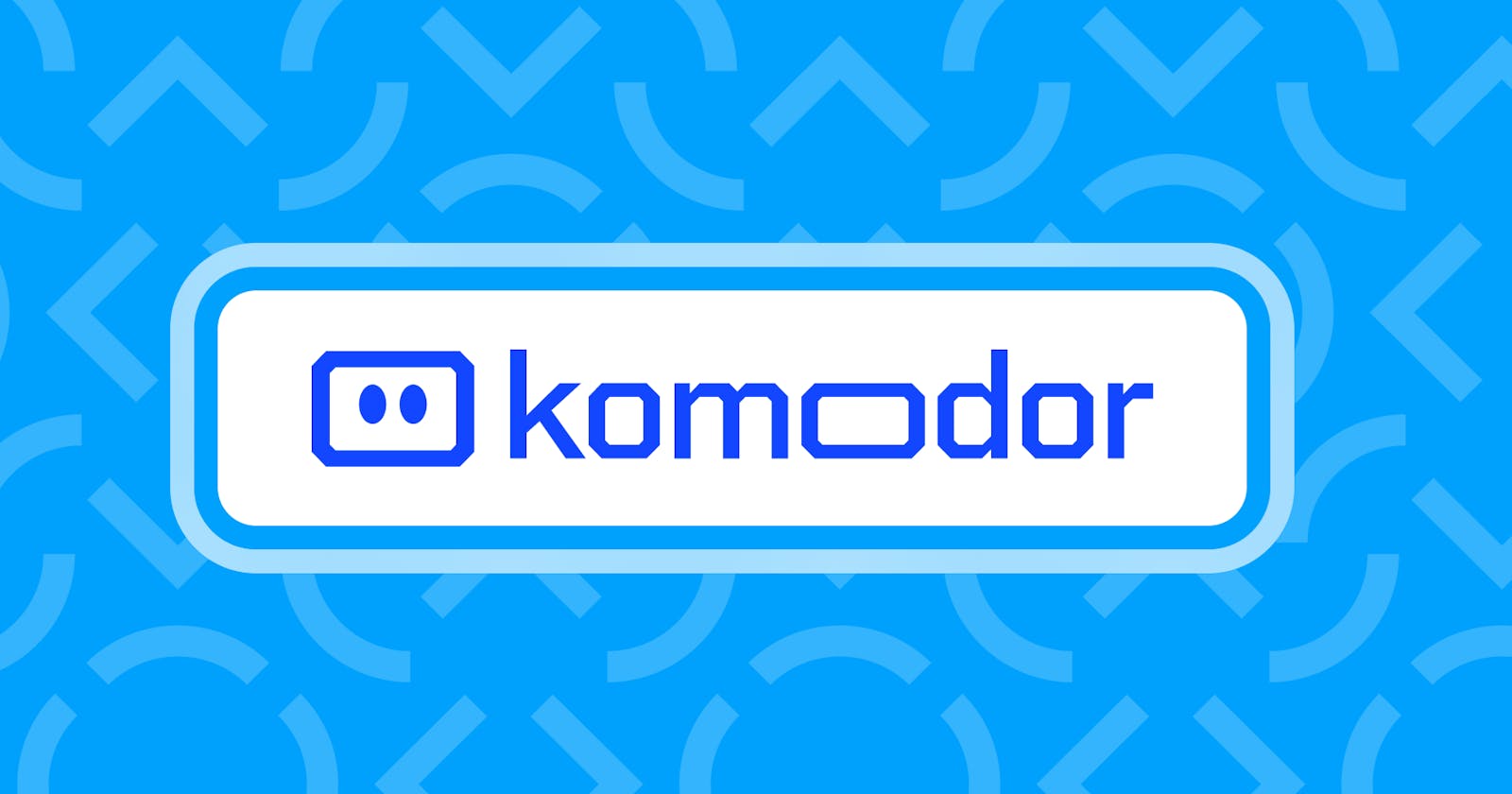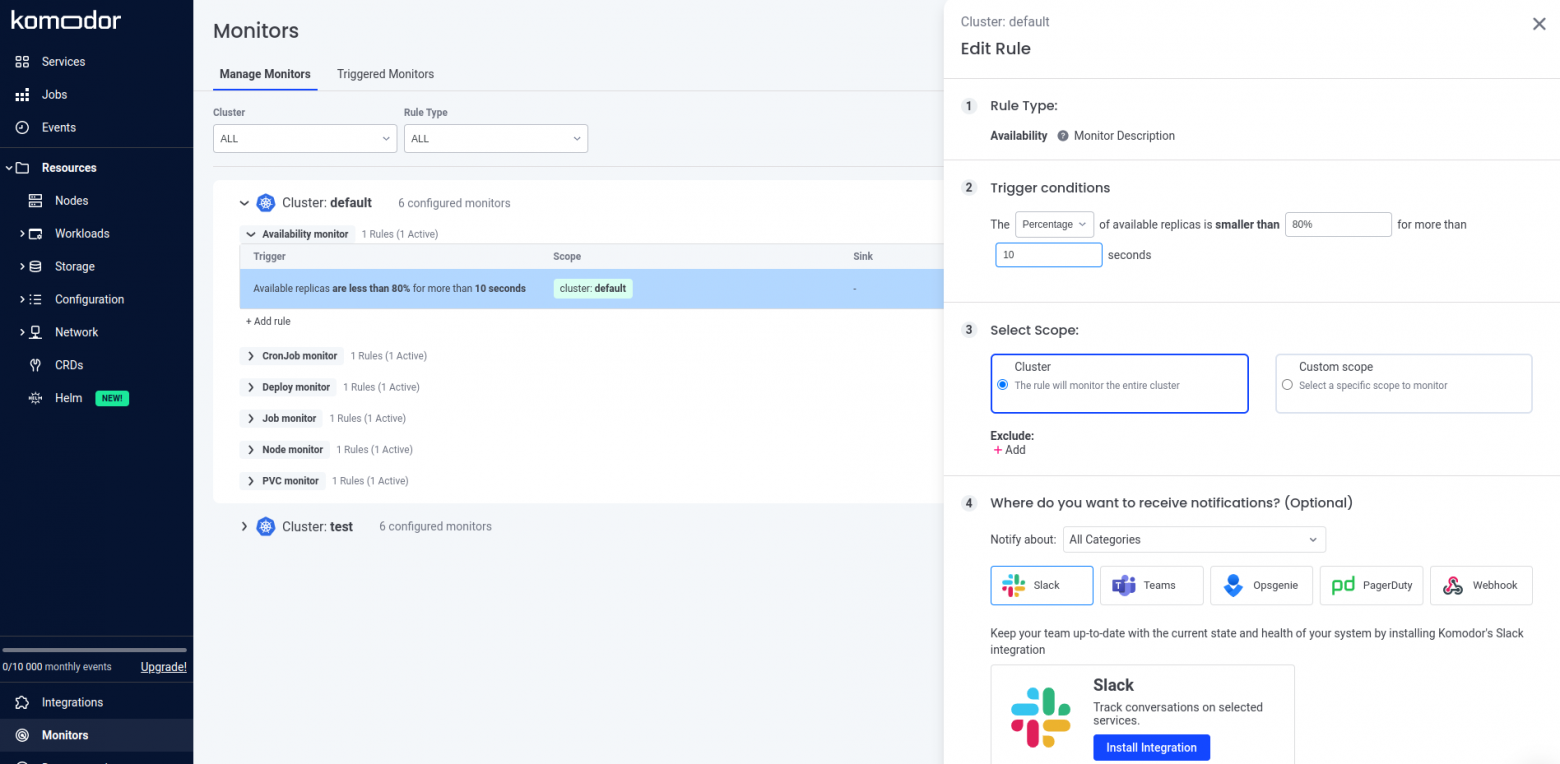Deliver value across the entire SDLC with Komodor
7 min read

Table of contents
Kubernetes is a powerful platform for deploying and managing containerized applications at scale. However, it also comes with a steep learning curve and a lot of complexity. Kubernetes users often face challenges such as:
Understanding the state and health of their applications and clusters
Troubleshooting issues and finding the root cause of failures
Optimizing the performance and cost of their resources
Collaborating and communicating across teams and roles
Keeping up with the best practices and latest trends
That’s where Komodor comes in. Komodor is a Kubernetes platform for humans that helps you easily operate, troubleshoot and optimize your K8s applications. It provides a unified, visual and actionable control plane for all your K8s resources, events and changes. It also delivers value across the software development lifecycle (SDLC) for different stakeholders, such as developers, infrastructure teams and management.
To illustrate how Komodor can help you with your Kubernetes challenges, let’s look at some real-world use cases.
A DevOps engineer at a retailer with a multi-cluster setup wanted an easy way for operations staff who are not as experienced to be able to look into what might be wrong with workloads across these clusters. With Komodor, they can see all the services and their health status at a glance, without having to go into each workflow individually. They can also drill down into the details of each event or change that affects their applications, such as deployments, config maps, secrets, pods, services, etc. They can also apply the necessary fixes or actions with one click, such as SSH, port forwarding, terminating a pod or restarting a deployment.
A senior SRE at a fintech company with a complex microservices architecture wanted to reduce the time and effort spent on troubleshooting issues in their Kubernetes clusters. With Komodor, they can see a unified timeline of all the events and changes that happen in their clusters, such as deployments, config maps, secrets, pods, services, etc. They can also analyze the impact and severity of each event or change on their application’s performance and availability. They can also identify the root cause of any issue with automated triage analysis and diagnosis. They can also escalate issues with context to other teams or tools if needed.
A software engineering manager at a crypto exchange wanted to optimize the performance and cost of their Kubernetes resources. With Komodor, they can see scorecards, trends, insights and actions for each application’s reliability, best practices and costs. They can also right-size their resources based on actual usage and demand. They can also eliminate idle or underutilized resources that waste money. They can also apply dynamic optimization strategies that balance cost and performance. They can also get proactive cost-performance analysis and alerts.
Let's take a look at how Komodor helps overcome Kubernetes challenges by simplifying your operations, revolutionizing your troubleshooting and optimizing costs and performance, and how it makes it easier for various teams to deliver value across the SDLC.
Developers
As a developer, you want to own your applications end-to-end, from development to deployment to maintenance. You want to be able to detect, investigate and remediate issues quickly and independently, without relying on other teams or tools. You also want to develop and deploy as fast as you can, without compromising on quality or reliability.
Komodor empowers you to do all that and more by simplifying your Kubernetes operations. With Komodor, you can monitor the health and status of your applications and clusters in real-time from a single dashboard. You can see a unified timeline of all the events and changes that affect your applications, such as deployments, config maps, secrets, pods, services, etc. You can drill down into the details of each event or change, such as who made it, when, why and how. You can also analyze the impact and severity of each event or change on your application’s performance and availability.

Komodor also revolutionizes your Kubernetes troubleshooting experience by eliminating guesswork. With Komodor, you can identify the root cause of any issue with automated triage analysis and diagnosis. You can apply the necessary fixes or actions with one click, such as SSH, port forwarding, terminating a pod or restarting a deployment. You can also escalate issues with context to other teams or tools if needed. Komodor helps you learn from your mistakes and improve your skills with remediation recommendations and best practices.
Komodor helps you take full ownership of your applications and reduce the mean time to resolution (MTTR) of issues and increase the mean time between failures (MTBF) of your applications.
Infrastructure Teams
As an infrastructure team, you want to safely delegate controls to other teams and users, without compromising on security or governance. You want to reduce toil and offload menial tasks to automation, so you can focus on innovating and scaling up your infrastructure. You also want to ensure that your infrastructure is reliable, resilient and efficient.
Komodor enables you to do all that and more by streamlining your Kubernetes management and governance. With Komodor, you can manage multiple clusters, namespaces and applications from a single dashboard. You can set up granular permissions and roles for different users and teams with SSO and RBAC. You can also integrate with your existing tools and workflows, such as CI/CD pipelines, alerting systems, logging platforms, etc. Komodor helps you track and audit all the changes and events that happen in your clusters with historical data.

Komodor also helps you optimize your resource utilization and reduce your infrastructure costs by balancing cost and performance. With Komodor, you can optimize the performance and cost of your resources with scorecards, trends, insights and actions. You can right-size your resources based on actual usage and demand. You can also eliminate idle or underutilized resources that waste money. Komodor helps you apply dynamic optimization strategies that adapt to changing conditions. Komodor also provides proactive cost-performance analysis and alerts and helps you ensure that your infrastructure is reliable, resilient and efficient.
Management
As a manager, you want to unlock the full value of Kubernetes for your organization. You want to increase velocity and remove bottlenecks in your development process. You want to optimize resources and reduce costs in your infrastructure. You also want to have visibility and accountability across your teams and projects.
Komodor supports you to do that by leveraging Kubernetes as a strategic advantage for your organization. With Komodor, you can see an executive overview of your Kubernetes applications’ health, performance and costs from a single dashboard. You can drill down into the details of each application’s scorecard, trends, insights and actions. You can also compare different applications’ metrics across clusters, namespaces or labels.

It also helps you track the progress and status of each deployment or issue in real time from a unified timeline. You can see who is responsible for each change or event in your clusters. You can also identify areas of improvement or risk in your applications’ reliability, best practices or costs. Komodor helps you align your teams’ goals and incentives with your organization’s objectives.
Komodor also helps you empower your teams to collaborate and communicate effectively across roles. With Komodor, you can enable your teams to own their applications end-to-end, from development to deployment to maintenance. You can also enable your teams to detect, investigate and remediate issues quickly and independently, without relying on other teams or tools.
Conclusion
Komodor is a Kubernetes platform for humans that helps you easily operate, troubleshoot and optimize your K8s applications. It provides a unified, visual and actionable control plane for all your K8s resources, events and changes. It also delivers value across the SDLC for different stakeholders, such as developers, infrastructure teams and management.
If you want to experience the benefits of Komodor for yourself, you can sign up for the platform and start using it. You’ll be amazed by how much easier and faster Kubernetes can be with Komodor.